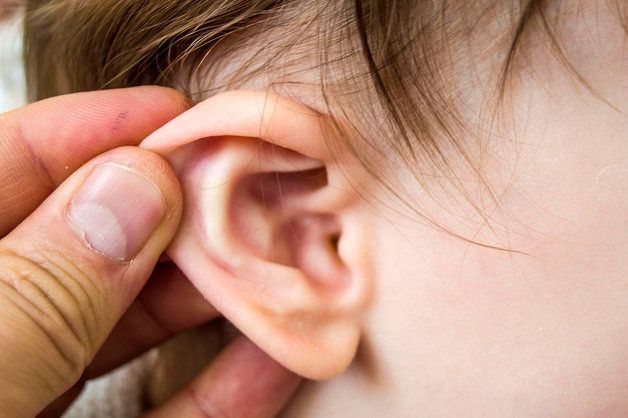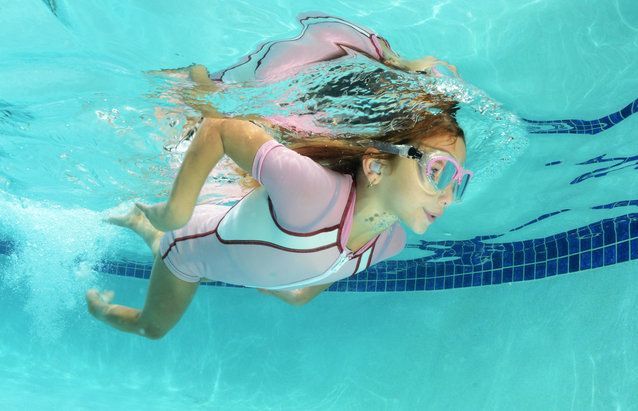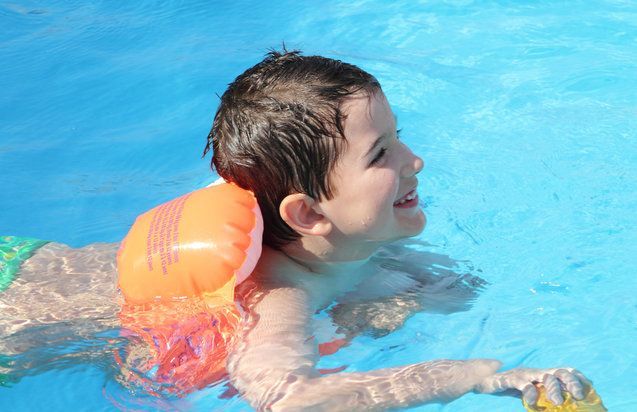Can You Go Swimming with Ear Tubes?

When it comes to swimming with ear tubes, there are a lot of misconceptions out there. Below are some helpful guidelines to help you understand what they are, the measures to take, and tips to avoid swimmer’s ear for your child. The end goal is to foster a safe swimming environment for your child.
What Are Ear Tubes?

Ear tubes are tiny tubes made up of plastic or metal that is inserted surgically in the eardrum. During surgery, a hole is created in the eardrum and a tube is inserted.
The hole creates an airway that ventilates the middle ear, which prevents the accumulation of fluid behind the eardrum. They usually fall out on their own within six to eighteen months. The hole closes on its own, so no surgery is needed to remove the ear tubes.
Who Should Get Ear Tubes?

Ear tubes are most commonly recommended by doctors for children who exhibit the following conditions:
- Children who often get build-up behind the eardrum that causes hearing or speech impairment.
- Children who often get ear infections.
It’s important to note that not all children who experience frequent ear infections necessarily need ear tubes. According to the clinical practice guidelines from the American Academy of Otolaryngology-Head and Neck Surgery, children who have fluid in their eardrums for less than three months should not be considered for ear tubes. Ear tubes should only be considered for children who experience long-term issues.
Ear Tubes And Swimming

So is it okay for your child to go swimming with ear tubes? Yes—absolutely.
In the past, there were two main common misconceptions about ear tubes and swimming:
- If you have ear tubes, you cannot swim.
- Earplugs should be worn during swimming to protect your child against ear infections and to protect their ear tubes.
The clinical practice guidelines state that unless there are issues experienced after swimming, formal water precautions are not necessary. In other words, you are good to go swimming with ear tubes.
Regarding earplugs, although some doctors may recommend them to protect the ear and ear tubes, unless your child is diving or swimming in untreated water such as lakes and oceans, earplugs are not necessary. Studies have shown that there was very little difference between children who wore earplugs and children who didn’t wear earplugs while swimming; the clinical impact of earplugs was small .
It’s always best to speak with your doctor about your child’s circumstances in order to see if ear plugs are the right option. And if you do decide to get your child earplugs, be sure to get the ones that are intended to keep out water (as opposed to foam plugs designed for noise reduction).
Tips On Preventing Swimmer’s Ear

It’s worth noting that ear infections are not the same as swimmer’s ear. Swimmer’s ear is an infection of the outer ear canal as a result of bacteria growing from the water, whereas ear infections occur in the middle ear canal. Some of the symptoms are mild itching, redness, and pus.
A few things you can do to avoid swimmer’s ear are:
- Keep your ears dry. After swimming, be sure to dry the outer ear with a towel and tilt your head to make sure you get all the water out of your ear.
- Avoid sticking foreign objects in your ear. This will only damage the inner lining of your ear.
- Avoid vigorously cleaning your ear. Although it’s important to maintain proper ear hygiene, ear wax plays an important role in preventing ear infections. It helps repel water!
For more tips to prevent swimmer’s ear , check out our blog post.
Contact Us
To learn more about ear tubes and swimming, contact us at SwimJim . Our team provides high-quality aquatics education in Houston and the New York City area. We strive to foster a fun and safe environment for swimmers of all ages and levels.
The post Can You Go Swimming with Ear Tubes? appeared first on Swim Jim.







